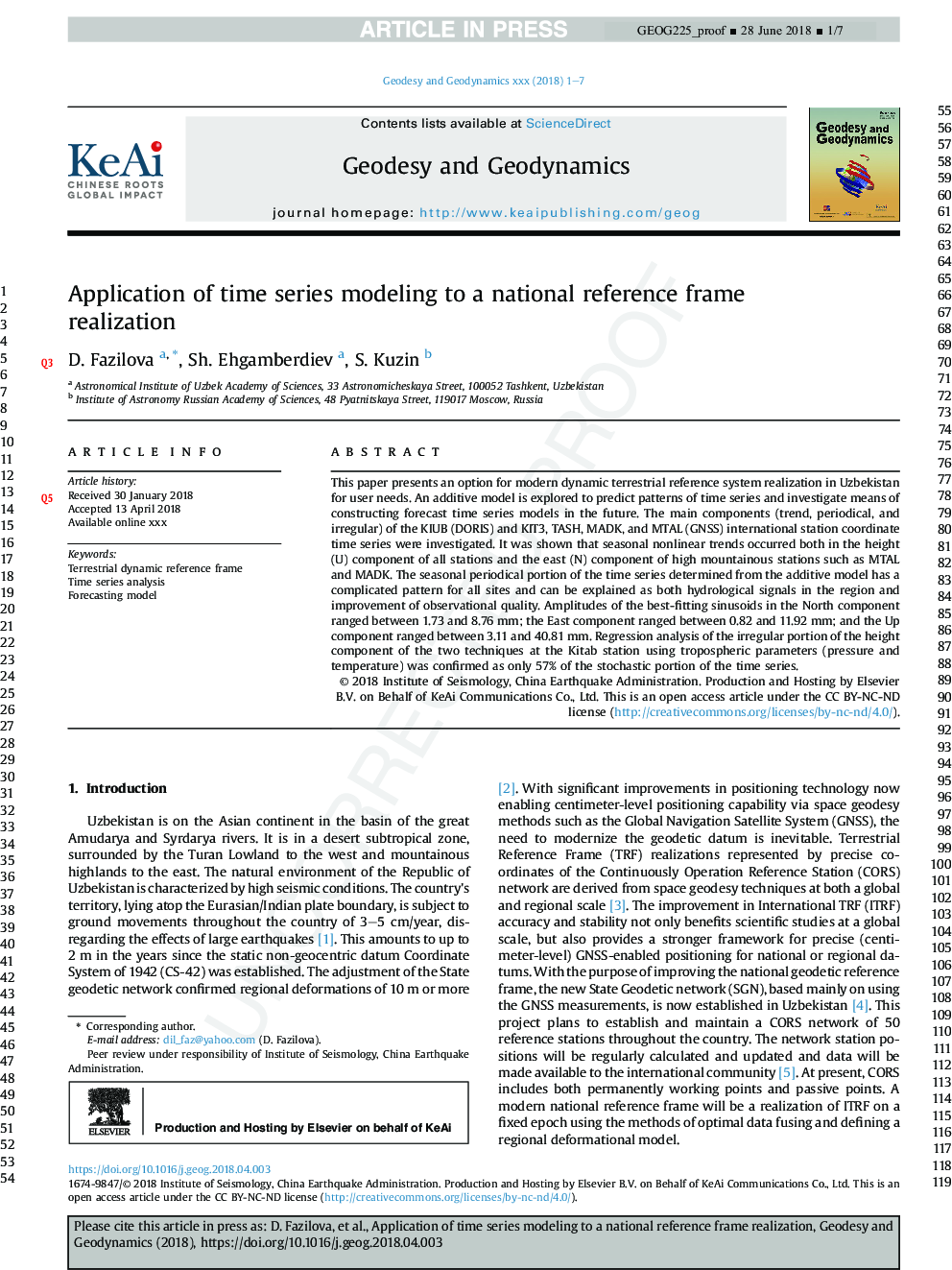| Article ID | Journal | Published Year | Pages | File Type |
|---|---|---|---|---|
| 8907837 | Geodesy and Geodynamics | 2018 | 7 Pages |
Abstract
This paper presents an option for modern dynamic terrestrial reference system realization in Uzbekistan for user needs. An additive model is explored to predict patterns of time series and investigate means of constructing forecast time series models in the future. The main components (trend, periodical, and irregular) of the KIUB (DORIS) and KIT3, TASH, MADK, and MTAL (GNSS) international stations coordinate time series were investigated. It was shown that seasonal nonlinear trends occurred both in the height (U) component of all stations and the east (E) component of high mountainous stations such as MTAL and MADK. The seasonal periodical portion of the time series determined from the additive model has a complicated pattern for all sites and can be explained as both hydrological signals in the region and improvement of observational quality. Amplitudes of the best-fitting sinusoids in the North component ranged between 1.73 and 8.76Â mm; the East component ranged between 0.82 and 11.92Â mm; and the Up component ranged between 3.11 and 40.81Â mm. Regression analysis of the irregular portion of the height component of the two techniques at the Kitab station using tropospheric parameters (pressure and temperature) was confirmed as only 57% of the stochastic portion of the time series.
Related Topics
Physical Sciences and Engineering
Earth and Planetary Sciences
Earth-Surface Processes
Authors
D. Fazilova D. Fazilova, Sh. Ehgamberdiev, S. Kuzin,
